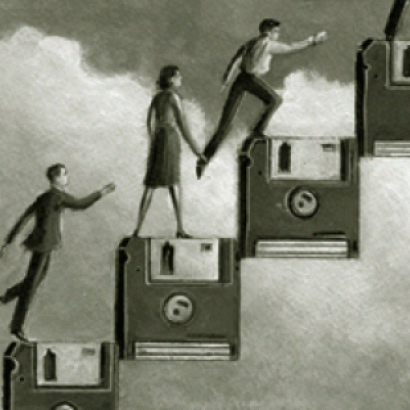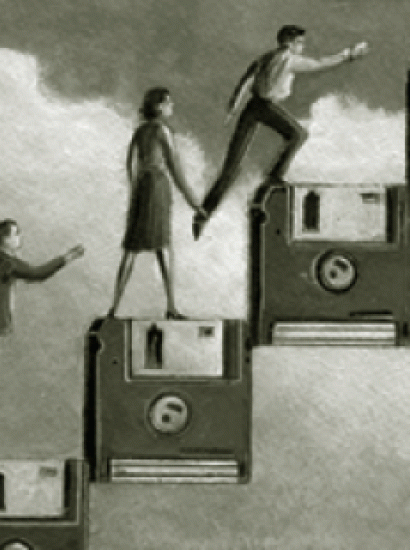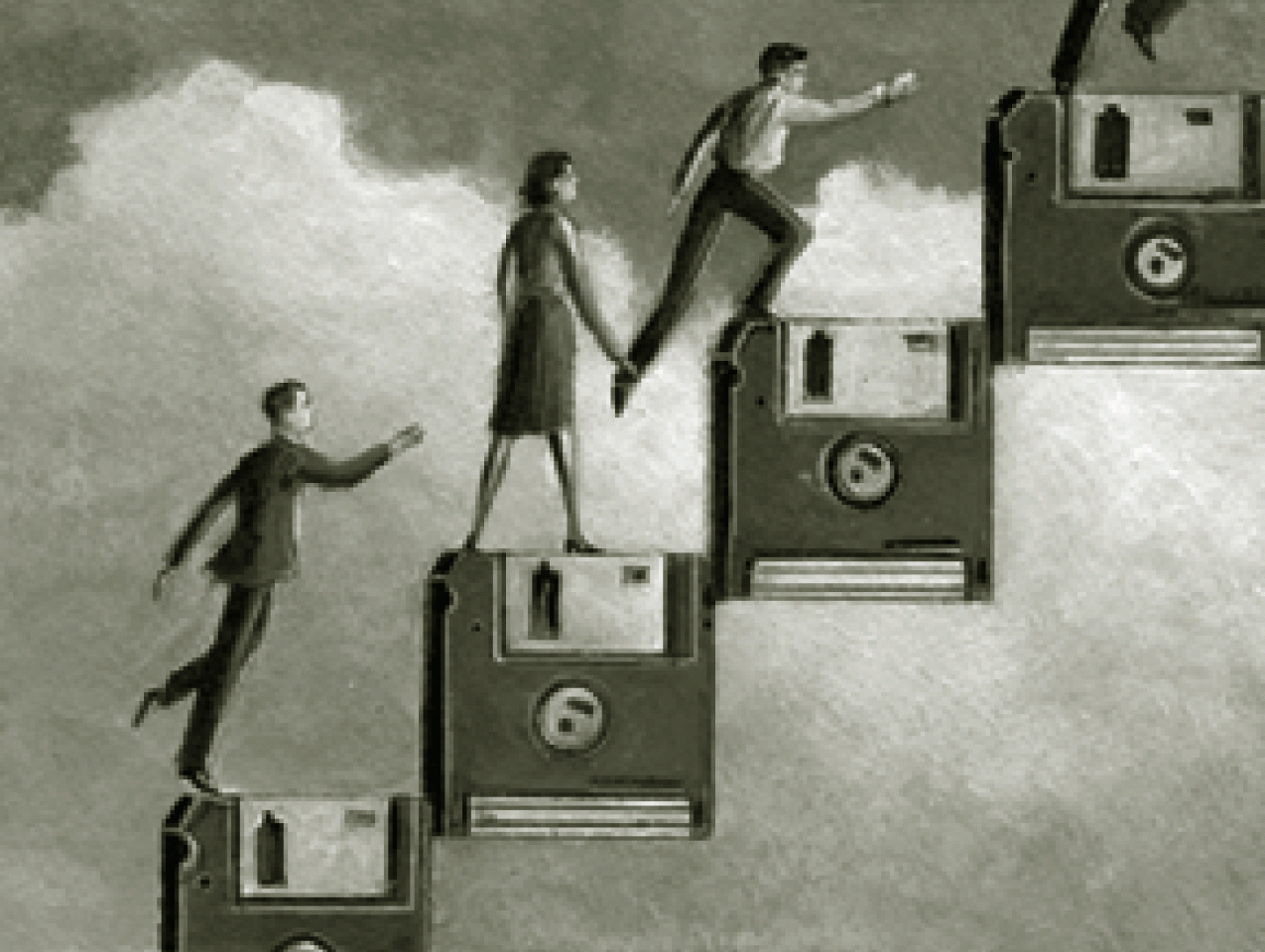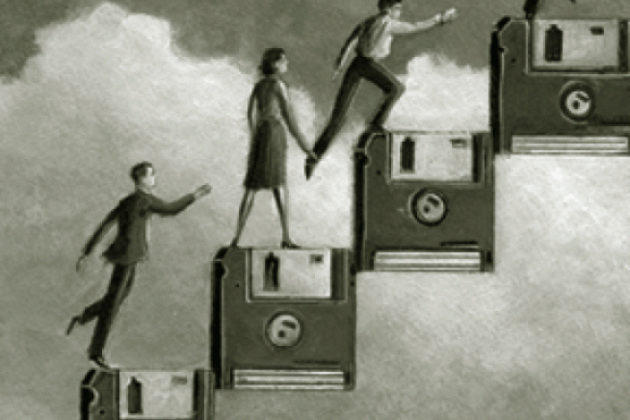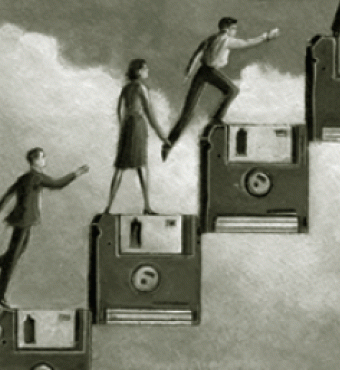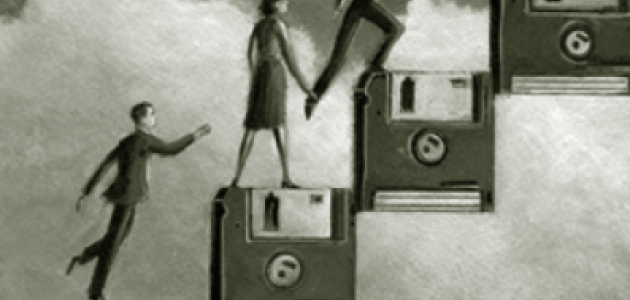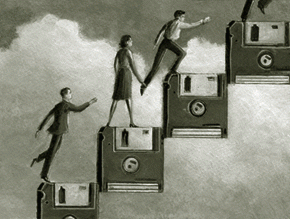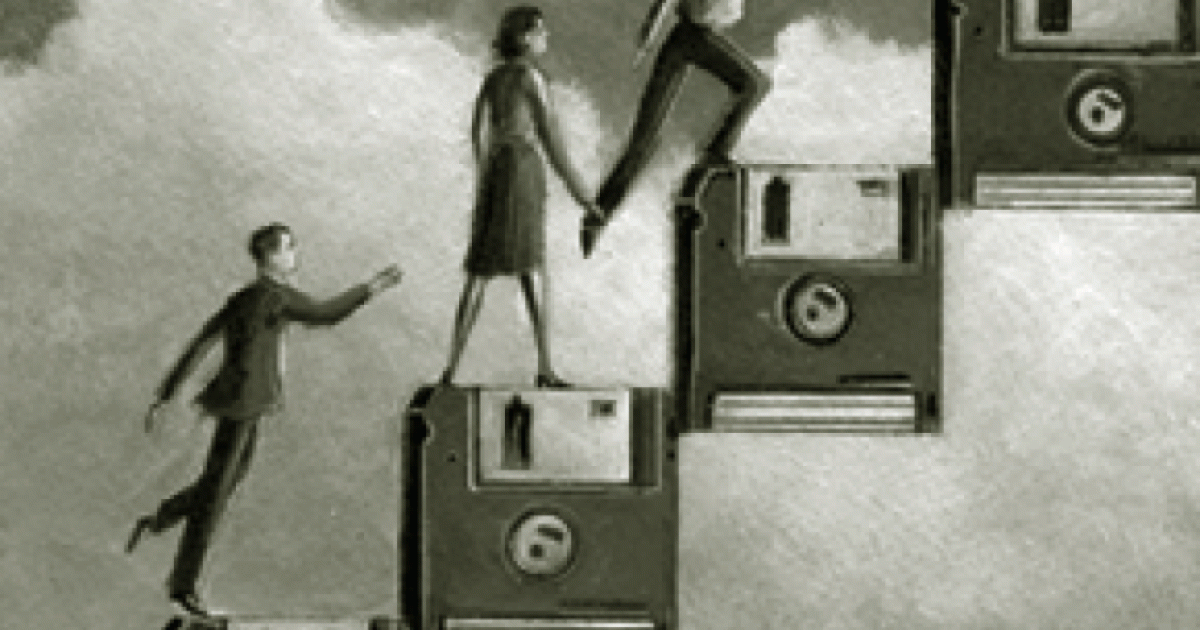- US Labor Market
- Economics
- Energy & Environment
The digital revolution has already had a dramatic impact on the United States and on the world
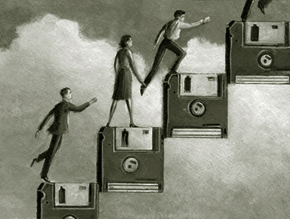
economy, an impact that promises to continue. Its effect on productivity, on the structure of industries, and on the power of government is evident. Indeed, it's a good bet that the computer revolution is just getting started.
Controversy has swirled around the extent to which computers and information technology have enhanced productivity. In the late 1980s, some economists questioned whether the computer revolution had created any gains at all. Such gains could not be detected in the federal government's standard measures of productivity because there weren't any, the economists concluded.
But a cardinal rule for economists studying government data--or any other data--is, Don't forget what you already know. We see the evidence of productivity from computers all around us. Computers have already revolutionized the way we do our banking. I'm not talking about the small percentage of us pushing the envelope by paying bills from our home personal computers (PCs), I'm talking about the vast majority of us, many of whom still can't tell a modem from Motrin, who use computers every time we use an automated teller machine. Because the ATM is open morning, noon, and night, we no longer have to run to the bank during lunch hour.
Computers also have allowed a huge percent of professionals to skip having a secretary retype memos, reports, and letters. As a result, employers have been able to cut many secretaries from their workforces; these secretaries then go and find work elsewhere or different work at the same companies. If these productivity gains don't show up in government data, maybe there's something wrong with the data. And there definitely is something wrong, as we'll see shortly.
Another thing economists know comes from economic theory, which tells us that people don't voluntarily spend millions of dollars on capital investments without expecting at least the same number of dollars in benefits. Managers and investors can make mistakes and overinvest in certain items, but when they do, the market teaches them not to do it again. So when companies and individuals spend hundreds of billions of dollars a year on computers and software, year in and year out, that is strong evidence that the investments are worthwhile. The economic analyst's job is to probe further and determine in what way.
Department of Circular Logic
Which brings us back to the government data. To compute labor productivity in an industry, the federal government's Bureau of Economic Analysis divides the output of an industry by the number of people employed. Not bad for, say, copper mining, where tons of copper mined is a pretty decent measure of output. But how do you think the federal government, with all its high-powered analysts and its multimillion-dollar budgets for gathering data, measures productivity in the banking industry? The number of transactions per employee? Or maybe the per-employee value of deposits and loans, adjusted for inflation?
Neither. The Commerce Department's august Bureau of Economic Analysis measures output of banking by the number of people employed in banking. This means that, if the number of banking employees rises by 10 percent, the government's data crunchers simply assume that output rises by 10 percent. Therefore, the banking industry's productivity growth is zero, not by observation but by definition.
| Even where the federal government's data show an improvement in productivity, they often understate the improvement! |
Of course, productivity in banking is growing. According to surveys by the Bank Administration Institute, the number of checks processed an hour--a measure of bank workers' productivity--rose from 265 items in 1971 to 825 in 1986, an increase of 7.6 percent annually. Presumably computers were a factor in this productivity growth. And as noted by Martin Baily, an economist at the Brookings Institution, and Robert J. Gordon, an economist at Northwestern University, the per-check processing costs for electronic funds transfers (EFTs), which were made possible by the information technology revolution, are a fraction of the cost of conventional check processing. EFTs still constitute only a small percentage of transactions, but, as this segment grows, productivity will increase.
Even where the federal government's data show an improvement in productivity, they often understate the improvement. The computer revolution has dramatically increased convenience in banking, in pumping gas, in buying groceries. Between 1990 and 1994, the number of point-of-sale terminals at grocery stores rose from 21,500 to 187,400 and the number at gasoline stations rose from 18,700 to 85,900. The time you save at the supermarket by paying with a credit card instead of a check, or by the universal product code allowing the items to be read into the cash register faster, should count as an increase in productivity. But the government data count only the employee's time saved, not the customer's.
The Customer Comes Last
This omission can lead to some strange measurements. One, noted by University of Chicago economist and Hoover fellow Sherwin Rosen, was that when the federal government's price controls on gasoline in the 1970s caused long queues, gas stations' reported productivity shot up dramatically. Stations could open for a few hours a day and sell all their gas to desperate customers who had to line up. But ignored in the productivity statistics were the millions of hours wasted daily by people in line.
Even in the manufacturing industries, where output is more easily defined, the government's data underestimate the growth in output. Take the auto industry, where the data show that hourly output grew by a healthy average of 2.4 percent a year between 1975 and 1992. To measure that industry's output, the federal government divides the dollar value of output by the price of the output. However, cars need fewer repairs, last longer, and conserve gasoline better than they used to, and much of this improvement can be traced to computer technology. But the price indexes used to compute the auto industry's output do not adequately adjust for this. Result: The increase in labor productivity in the auto industry, large as it appears, is actually larger.
Other evidence for the productivity-enhancing role of computers comes from wages. Princeton University economist Alan B. Krueger found that workers who use computers on the job earn wages 10 to 15 percent higher than those of workers who don't. With various statistical tests, he found that the wage differential could not be attributed to the PC users being better workers in any other respect. Interestingly, he noted that the most highly rewarded task for which employees used computers was e-mail and that, all other things being equal, those who played games on their PCs earned slightly lower wages. Mr. Krueger also presented some even blunter evidence from a survey of placement firms. For the eighty-three firms that responded to his 1991 survey, the average hourly rate for a secretary with computer skills was $12.77 versus $9.14 for one without such skills. If computers aren't productive, why pay someone with computer skills more?
Bean Counting
The computer is also having a big impact on agriculture, both here and around the world. Research in agriculture traditionally has been tremendously productive. When a scientist produces a strain of rice that increases yield by 20 percent, for example, the effect on world production--and on world hunger--can be enormous. According to Dennis Avery, director of the Center for Global Food Issues at the Hudson Institute in Churchville, Virginia, the information technology revolution is now allowing scientists all over the world to share information by e-mail. This is bound to increase the rate of introduction of new, higher-yielding strains of rice, beans, wheat, corn, and so on.
Mr. Avery also points out that computers are revolutionizing farm management. Until recently, he notes, farmers could not know with much accuracy how wet their land was and, therefore, how much to irrigate. Even if they could test land in one part of a field, the results would not necessarily apply to other areas. But computers have changed all that. Subsoil electronic sensors set all over the field will tell a computer on an hourly basis how much water is in the root zone of a particular crop as well as how much should be there. Concludes Mr. Avery, "We'll do irrigation better than we've ever done it before."
There's more. The computer revolution has led to the coining of a new term in agriculture: precision farming. U.S. farmers can now use the Global Positioning System (a computerized navigation system) to intensively sample soil yard by yard across a field and then use yield monitors on the harvesting equipment to tell what each square yard has produced. The goal is to determine and apply the exact amount of water, pesticides, and fertilizer the crops need and no more. With runoff and buildup of excess fertilizer and pesticides minimized, says Mr. Avery, the crops can yield their full potential with almost no environmental side effects.
The revolution is happening fast; virtually all harvesting machinery manufactured in the last two years comes with a yield monitor. Case IH, the second-largest farm machinery manufacturer in the United States, is now in the precision-farming advice business, marketing software and consulting services. Precision farming has already spread to Brazil and Argentina and will spread globally, predicts Mr.Avery.
Cheaper by the Dozen
One of my economics professors at the University of California at Los Angeles in the early 1970s was the quintessential number cruncher. He loved to spin the U.S. census tape on the big mainframe computer and look for empirical relationships among variables. Later that decade, I heard that this professor was thinking of giving up tenure, going out on his own, and buying his own mainframe, which in those days cost hundreds of thousands of dollars.
Today we might be impressed by someone who was willing to give up a job with tenure, but the idea of buying one's own computer to handle large data sets would be simply a detail. In the overall scheme, the cost of a PC with the same capabilities as a late-1970s mainframe would be no more significant than a rounding error. Northwestern University economist Robert J. Gordon has estimated that the quality-adjusted price of computers dropped about 19.8 percent each year between 1951 and 1984. Since then, he estimates, prices have dropped by about 25 to 30 percent a year. True, prices of many goods drop equally quickly in the first few years after they're introduced. But a double-digit annual decline in the price of a good for a period of more than forty years is, as far as I know, historically unprecedented. This means that, for a computer of comparable quality, the price today would be less than 1/10,000 of its price in 1951. To put that in perspective, the computer capability that cost $100,000 in 1951 would cost about $3 today.
Computers' low prices mean that many people who previously worked as employees can run their own businesses, something they couldn't have done in computer-intensive industries twenty years ago. Between 1980 and 1992, according to the U.S. Statistical Abstract, the number of employees in firms with fewer than twenty employees increased by 29 percent, compared with a 24 percent increase in employees overall. Admittedly, the difference is smaller than I would have expected. But what the data leave out is the number of self-employed people, many of whom now work out of their homes.
Watching Big Brother
In George Orwell's fictional version of the future, 1984, Big Brother had more control over people's lives than even the real-world totalitarian governments of Hitler and Stalin. A key part of Orwell's vision was that Big Brother would use technology to control us. This view cannot be completely dismissed. Anyone who fails to report on his 1040 federal income tax form a payment for which he has received a 1099 form is foolish--even with its clunky old computers, the IRS is thought to have achieved a greater than 99 percent matching of 1040s and 1099s.
But a delicious irony is emerging that Orwell never conceived of: The computer revolution allows citizens to monitor, prod, and undercut the government. We can say, with only slight exaggeration, that we are using technology to control Big Brother. In February 1994, for example, when a few home schoolers learned of a provision in a bill before Congress that would have required parents to be certified before teaching their children, they used phones, faxes, and e-mail to alert their allies. In just over a week, members of Congress received more than 1 million calls telling them to back off. They quickly did. "We have had enough democracy for a while," said one exhausted congressional aide.
Similarly, in September 1994, when Congress added a provision to a lobbying bill that would have imposed tough restrictions on grassroots groups, a few members of such groups found out about it. Mainly via faxes, they alerted sympathizers: hosts of talk shows, trade associations, and other leaders around the country. The next week, the bill--which, in a previous version, had passed the House by a vote of 315 to 100 and the Senate by 95 to 4--was filibustered to death in the Senate. The computer revolution is allowing opponents of greater government control to learn of Big Brother's plans more quickly and to threaten Big Brother's little siblings.
Find the Money
"The Disappearing Taxpayer" reads the cover of a recent issue of The Economist. The two related articles inside predict that the growth of electronic commerce will hamper the government's ability to collect taxes. And taxes are the lifeblood of politicians. If governments can't keep their revenues high, they have less to spend on hounding us from cradle to grave. But what is a government to do when people can buy goods over the Internet and evade taxes or, at least, buy the goods from a company in the least-taxed political entity?
Computers have increased productivity, made it easier to start your own business, and made it harder for government to control you. They will do more of all three in the near future. Not bad for a product that a former IBM chairman predicted would have a worldwide demand of only five.








